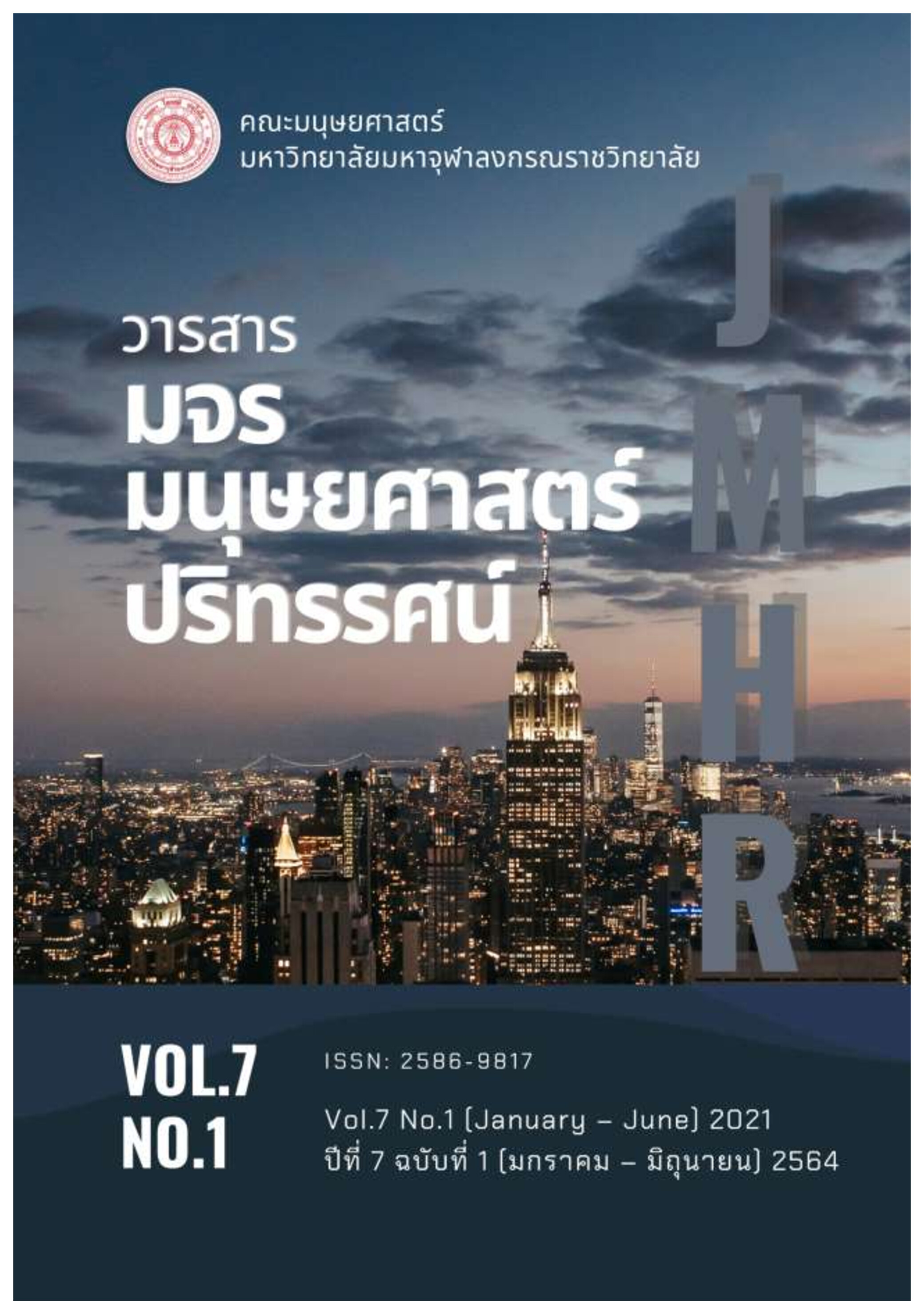แนวทางการพัฒนาวัดให้เป็นแหล่งเรียนรู้ด้านศาสนา ศิลปวัฒนธรรม ในจังหวัดลพบุรี
คำสำคัญ:
การพัฒนาแหล่งเรียนรู้, ด้านศาสนา, ศิลปวัฒนธรรม, วัดในเขตจังหวัดลพบุรีบทคัดย่อ
การศึกษาวิจัยเรื่อง แนวทางการพัฒนาวัดให้เป็นแหล่งเรียนรู้ ด้านศาสนา ศิลปวัฒนธรรมในจังหวัดลพบุรี มีจุดมุ่งหมายเพื่อศึกษาแหล่งเรียนรู้ด้านศาสนา ศิลปวัฒนธรรมของวัดในจังหวัดลพบุรี เพื่อศึกษากระบวนการในการบริหารการจัดการแหล่งเรียนรู้ภายในวัดตามหลักพุทธจิตวิทยา และเพื่อเสนอแนวทางการพัฒนาแหล่งเรียนรู้ด้านศาสนา ศิลปวัฒนธรรมสำหรับวัดในจังหวัดลพบุรี โดยการสัมภาษณ์เชิงลึก ผู้ให้ข้อมูลสำคัญ ได้แก่ เจ้าอาวาสวัดที่มีแหล่งเรียนรู้ด้านศาสนา ศิลปวัฒนธรรมของวัดในจังหวัดลพบุรี จำนวน 5 รูป โดยใช้วิธีการเลือกแบบเจาะจง ประเด็นที่สัมภาษณ์เกี่ยวกับแนวทางการจัดการความรู้ของแหล่งเรียนรู้ ในเรื่องการแสวงหาความรู้ การสร้างองค์ความรู้ การเข้าถึงแหล่งเรียนรู้ การเผยแพร่ความรู้ และการนำความรู้ไปใช้ประโยชน์
ผลการวิจัยพบว่า
- แหล่งเรียนรู้ด้านศาสนา ศิลปวัฒนธรรมของวัดในจังหวัดลพบุรี มีความพร้อมที่จะพัฒนาเป็นแหล่งเรียนรู้ได้ เพราะสามารถศึกษางานศิลปะประเภทต่าง ๆ ทั้งในด้านสถาปัตยกรรม ประติมากรรม และจิตรกรรม ผ่านงานพุทธศิลป์ซึ่งสร้างขึ้นเพื่อส่งเสริมการเผยแผ่และการปฏิบัติทางพระพุทธศาสนา และสามารถศึกษาหลักธรรมทางพระพุทธศาสนาจากการประกอบพิธีกรรม ทำบุญตามประเพณี หรือปฏิบัติกิจกรรมที่เกี่ยวเนื่องกับหลักปฏิบัติ ได้แก่ รักษาศีล สวดมนต์ และนั่งสมาธิ
- กระบวนการในการบริหารการจัดการแหล่งเรียนรู้ภายในวัดตามหลักพุทธจิตวิทยา การแสวงหาความรู้ และการสร้างองค์ความรู้ แต่ละวัดรู้ว่าจุดเด่นของวัดตนเองมีอะไรบ้างที่เป็นแหล่งเรียนรู้ และสามารถจัดลำดับความสำคัญของความรู้เหล่านั้นได้ การจัดการเรียนรู้พบว่า ทุกวัดยังไม่มีการวางโครงสร้างความรู้ เพื่อเตรียมพร้อมสำหรับการเก็บความรู้อย่างเป็นระบบในอนาคต การจัดกิจกรรม พบว่ารูปแบบการจัดกิจกรรมการเรียนรู้ที่ทุกวัดมีเหมือนกันคือ กิจกรรมที่เกี่ยวเนื่องกับหลักปฏิบัติ วัดจึงควรจัดกิจกรรมให้หลากหลาย ต้องคำนึงถึงวัยและความแตกต่างระหว่างบุคคล การประเมินผล พบว่า กระบวนการในการบริหารการจัดการแหล่งเรียนรู้ภายในวัดทั้ง 5 แห่ง ไม่มีการจัดทำแผนการดำเนินงานอย่างชัดเจน ไม่มีการประเมินผล จึงไม่สามารถที่จะนำผลการประเมิน และข้อเสนอแนะมาใช้ในการวางแผนพัฒนาต่อไปได้
- แนวทางการพัฒนาแหล่งเรียนรู้ด้านศาสนา ศิลปวัฒนธรรมสำหรับวัดในจังหวัดลพบุรี ให้บรรลุจุดมุ่งหมายได้นั้น วัดควรเริ่มต้นจากการพัฒนาบุคลากรของวัดให้มีคุณภาพในทุก ๆ ด้านให้มีความรู้ที่ถูกต้องและทันสมัย สามารถพัฒนากิจกรรมต่าง ๆ ในวัดให้ดำเนินการได้อย่างแพร่หลาย ควรพัฒนาและปรับปรุงศาสนสถานต่าง ๆ ให้สะอาด สวยงาม ควรจัดเก็บศาสนวัตถุ แยกไว้อย่างชัดเจนเป็นหมวดหมู่ในรูปของพิพิธภัณฑ์ ควรปรับปรุงสภาพแวดล้อมภายในวัดให้มีความสะอาดร่มรื่น และปลอดภัย ควรจัดทำเอกสารขอรับการสนับสนุนงบประมาณจากส่วนราชการของจังหวัด หรือองค์การบริหารส่วนท้องถิ่น ถ้าส่วนราชการไม่มีงบประมาณในการสนับสนุนก็ขอความร่วมมือให้ส่งบุคลากรเพื่อเป็นวิทยากรให้ความรู้กับบุคลากรของวัด ควรมีการสร้างกิจกรรมที่ทำให้คนในชุมชนหันมามีส่วนร่วมมากขึ้น เพื่อให้เกิดประโยชน์ร่วมกันระหว่างวัด บ้าน โรงเรียน
References
กระทรวงศึกษาธิการ. (2545). พระราชบัญญัติการศึกษาแห่งชาติพุทธศักราช 2542 แก้ไขเพิ่มเติม (ฉบับที่ 2) พุทธศักราช 2545. กรุงเทพฯ : โรงพิมพ์คุรุสภา ลาดพร้าว.
การท่องเที่ยวแห่งประเทศไทย. (2543). วัดพัฒนา 43. กรุงเทพฯ : โรงพิมพ์การศาสนา.
เกษม ศิริสุขโขดม. (2550). การประเมินผลโครงการ. กรุงเทพฯ : ศูนย์ประเมินผลสำนักงานเศรษฐกิจการเกษตร.
ธงชัย สันติวงษ์. (2550). พฤติกรรมองค์การ: การศึกษาการบริหารพฤติกรรมองค์การเชิงบริหาร (พิมพ์ครั้งที่ 3). กรุงเทพฯ : ไทยวัฒนาพานิช.
ประทาน คงฤทธิศึกษากร. (2529). การบริหารและการจัดระเบียบบริหารราชการไทย. กรุงเทพฯ : โอเดียนสโตร์.
พระครูวิสุทธิสีลาภิวัฒน์. (2558). รูปแบบการพัฒนาวัดให้เป็นแหล่งท่องเที่ยวเชิงวัฒนธรรม. วารสาร มจร มนุษยศาสตร์ปริทรรศน์, 1(2), 71.
พระครูสังฆรักษ์จักรกฤษณ์. (2559). การพัฒนาวัดเป็นแหล่งเรียนรู้ของชุมชน. วารสาร มจร การพัฒนาสังคม.1(1),117.
พระครูสังฆรักษ์วุฒิพงษ์ วุฑฒิวํโส, อินถา ศิริวรรณ, สิน งามประโคน และวีระ สุภะ.(2561). การพัฒนาวัด ในประเทศไทยเป็นแหล่งเรียนรู้เชิงพุทธเพื่อส่งเสริมการท่องเที่ยวอาเซียน. วารสารสันติศึกษาปริทรรศน์ มจร, 6(4), 1602.
พระมหาเกริกชัย เริญไธสง. (2557). แนวทางการพัฒนาวัดตามมาตรฐานของสำนักงานพระพุทธศาสนาแห่งชาติในจังหวัดนครปฐม (ปริญญาศึกษาศาสตรมหาบัณฑิต).บัณฑิตวิทยาลัย : มหาวิทยาลัยศิลปากร. นครปฐม.
เพลินพิศ สมสกุล. (2559). การบริหารจัดการแหล่งเรียนรู้ในชุมชน ประเภทพิพิธภัณฑ์และวัด: กรณีศึกษา อำเภอเมือง จังหวัดลพบุรี. วารสารกระแสวัฒนธรรม. 17(32), 34-35.
สำนักงานทรัพย์สินส่วนพระมหากษัตริย์. (2559). คู่มือการดูแลรักษาศาสนสถาน (ฉบับปรับปรุง 2559). กรุงเทพฯ : โรงพิมพ์สำนักงานทรัพย์สินส่วนพระมหากษัตริย์.
สำนักงานเลขาธิการสภาผู้แทนราษฎร. (2562). ความมุ่งหมาย และคำอธิบายประกอบรายมาตราของรัฐธรรมนูญแห่งราชอาณาจักรไทย พุทธศักราช 2560. กรุงเทพฯ : สำนักการพิมพ์ สำนักงานเลขาธิการสภาผู้แทนราษฎร.
อุไรวรรณ พลจร. (2558). ผลของการสวดมนต์แบบพุทธต่อความวิตกกังวลของผู้ป่วยมะเร็งโลหิตวิทยาที่ได้รับเคมีบำบัด (วิทยานิพนธ์พยาบาลศาสตรมหาบัณฑิต, การพยาบาลผู้ใหญ่). บัณฑิตวิทยาลัย, มหาวิทยาลัยสงขลานครินทร์. สงขลา.

Downloads
เผยแพร่แล้ว
How to Cite
ฉบับ
บท
License
Copyright (c) 2021 วารสาร มจร มนุษยศาสตร์ปริทรรศน์

This work is licensed under a Creative Commons Attribution-NonCommercial-NoDerivatives 4.0 International License.




